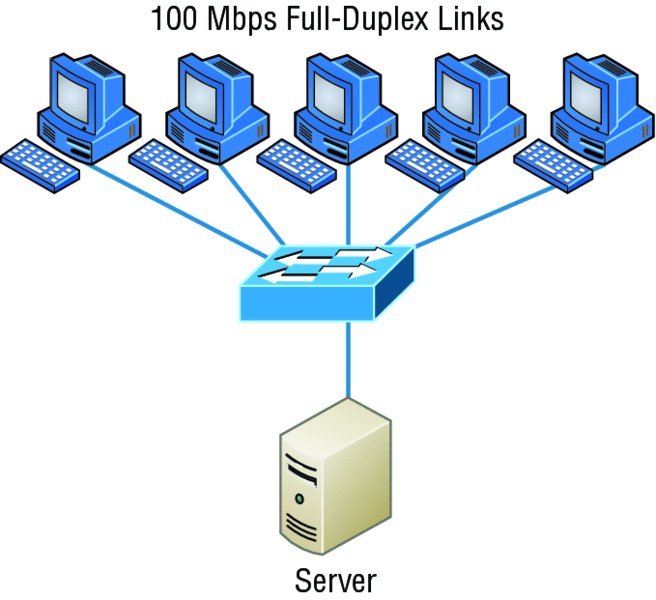Switching Services
Bridges use software to create and manage a filter table, but switches use application-specific integrated circuits (ASICs) to accomplish this. Even so, it’s still okay to think of a Layer 2 switch as a multiport bridge because their basic reason for being is the same: to break up collision domains.
Layer 2 switches and bridges are faster than routers because they don’t take up time looking at the Network layer header information. Instead, they look at the frame’s hardware addresses before deciding to forward, flood, or drop the frame.
Switches create private, dedicated collision domains and provide independent bandwidth on each port, unlike hubs. Figure 11.4 shows five hosts connected to a switch—all running 100 Mbps full duplex to the server. Unlike with a hub, each host has full-duplex, 100 Mbps of dedicated communication to the server.
Figure 11.4 Switches create private domains.

Layer 2 switching provides the following benefits...
























































